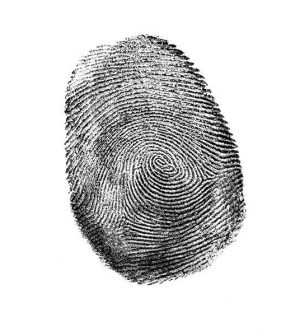- Understanding the Connection Between Anxiety and Depression
- How Daily Prunes Can Influence Cholesterol and Inflammation
- When to Take B12 for Better Absorption and Energy
- Epsom Salts: Health Benefits and Uses
- See What Saffron Can Do for Sleep and Heart Health
- 6 Common Mistakes to Avoid Before Your Physical
- Can Sweating Really Help You Beat a Cold?
- Strengthening Your Relationship: Practical Strategies
- Skip Storing This Everyday Product in the Fridge Door
- Green Tea + B3 Pairing May Boost Brain Health
Scientists ID Genes That Make Your Fingerprints

WEDNESDAY, Jan. 12 2022Your fingerprints may be more than a surefire way to identify you: New research suggests their patterns may be linked to genes that guide limb development.
“People may wonder why our team is working on fingerprints,” said co-senior study author Sijia Wang, a geneticist at the Shanghai Institute of Nutrition and Health in China. “We started the work purely out of curiosity. But later it turns out fingerprint pattern is associated with genes for limb growth, which are critical for fetal development.”
Furrows and ridges begin to form on a fetus’ fingers and toes after the third month of pregnancy, the researchers noted.
For the study, published Jan. 6 in the journal Cell, the investigators scanned the DNA of more than 23,000 people across ethnic groups. They found that at least 43 regions on the genome are associated with fingerprint patterns. One of the most influential regions appeared to be regulating the expression of a gene called EVI1. This gene is known for its role in embryonic limb development.
The researchers then tested their finding by modifying the DNA of mice so their expression of EVI1 was turned down. These mice developed abnormal skin patterns on their digits compared with mice that were not modified.
Analysis of human data revealed that fingerprint patterns are genetically correlated with finger length.
One example of this, according to researchers, is that people with whorl-shaped fingerprints on both of their little fingers tend to have longer little fingers than those who do not. This correlation is strongly linked to genes involved in limb development.
“We don’t know exactly how the genes shape fingerprint patterns, but it could be determined by the amount of strength from growth that’s put on an embryonic tissue called volar pads that plays an important role in the formation of different patterns of fingerprint,” said co-first author Jinxi Li, a geneticist at the Human Phenome Institute at Fudan University in Shanghai.
As a fetus’ hands grow, she said, the palms and fingers would stretch and elongate. This could turn a whorl into a loop, for example.
Past research has suggested that EVI1 is linked to risk of leukemia, and some studies have observed that people with more whorl patterns are more susceptible to the blood cancer, Wang said.
“Many congenital genetic disorders are related to different dermatoglyphic patterns, such as fingerprints,” Wang explained in a journal news release. For example, children with Down syndrome are more likely to have a single crease running across the palms of their hands.
“Our study suggests that dermatoglyphic patterns are affected by crucial development genes,” Wang said.
The research is part of the International Human Phenome Project led by Fudan University in Shanghai. The team is planning more research on how fingerprint patterns are related to diseases.
More information
Rutgers University has more on fingerprints and health conditions.
SOURCE: Cell, news release, Jan. 6, 2022
Source: HealthDay
Copyright © 2026 HealthDay. All rights reserved.










